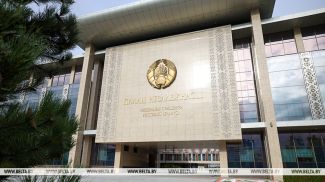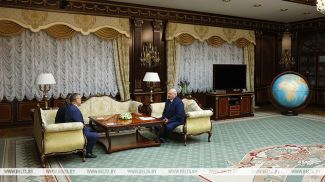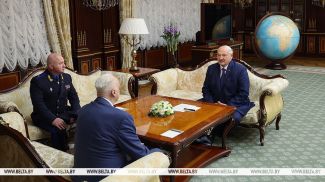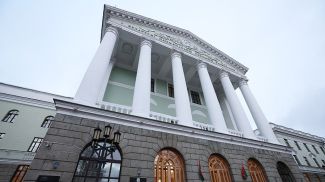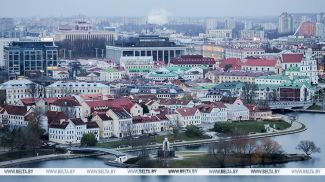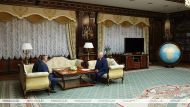
News of the story
"After the Fact: Lukashenko’s Decisions"
A new building of the National Library of Belarus was inaugurated in Minsk in June 2006. It became not only a unique place with the richest book collections but also a huge multifunctional center. When announcing decision to launch this construction project, Aleksandr Lukashenko said that the Belarusians dreamed of building an edifice that would become a national symbol of the young independent country, its calling card and an embodiment of the most important traits of the Belarusian people, the people who went down in history as diligent workers and creators, not as aggressors, invaders and destroyers.
In a new episode of BelTA’s YouTube project “After the Fact: Lukashenko’s Decisions” we will tell you why the construction of the Belarusian “diamond” became a certain challenge and risk for the Belarusian authorities, but at the same time a truly national project. What did Aleksandr Lukashenko admit to after the National Library was opened and could Belarus have done without such a “giant”? We will also look into the “holy of holies” and find out how the book depository is organized and what path the documents take before they reach the reader's hands.
Interesting tidbits about the National Library of Belarus
The National Library of Belarus is actually more than 100 years old. De jure, it dates back to 15 September 1922. On that day the Council of People's Commissars of the BSSR adopted a resolution "On the establishment of the Belarusian State Library and compulsory registration of all published works issued in the BSSR".
At first it was based at Belarusian State University. But soon the library was moved to the Yubileiny House on Zakharievskaya Street (the present Nezavisimosti Avenue). Before the First World War it housed the church and archaeological museum. The place was built for the 300th anniversary of the reign of the House of Romanov. Hence the name ‘Yubileiny’ [jubilee]. Once it was church in honor of Saints Methodius and Cyril, the Equal-to-the-Apostles. There is some continuity in this, isn't there?
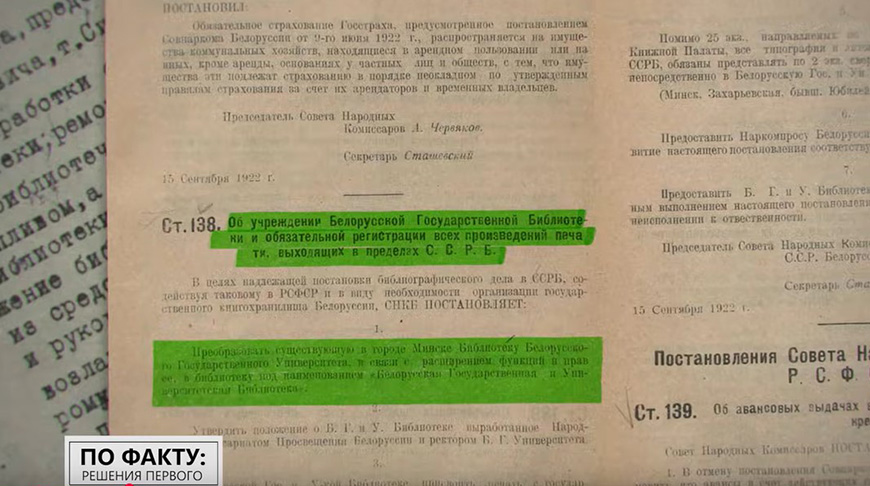
The library critically lacked space. Official reports on the state of the building illustrated in detail the conditions of the time: the lack of electric lighting and semi-darkness in the reading rooms, insufficient ventilation, a large layer of dust on books, shelves and furniture, and the unsanitary condition of the staircases and corridors.
In 1932, on the occasion of its 10th anniversary, the library was named after Vladimir Lenin. In the same year it moved into a new building, which became its home for the next 70 years. On the eve of the Great Patriotic War the library's holdings numbered about two million books and documents. It was among the world’s 30 best libraries. However, the war caused irreparable damage to the library. The Nazis looted, removed and destroyed more than one and a half million books, and the building itself was severely damaged by explosions. The invaders burned the reserved collection facility together with almost half a million publications.
The work on the restoration of the Belarusian “temple of knowledge” started just a week after the liberation of Minsk. The library holdings were collected bit by bit. Search for the stolen books began in Germany, Poland, Czechoslovakia and Hungary. Two years later the number of the books in the library’s holdings reached) the pre-war level, although many gaps have not been filled to this day.
When did the construction of the National Library begin?
In 1992, the State Library of the BSSR acquired a new status and became known as the National Library of Belarus. Another 10 years later, Aleksandr Lukashenko signed a decree to construct a new building. The construction of the library was declared the most important state and national construction project.
“We are starting a great thing - the construction of the National Library. This project is not only relevant and necessary; it is our investment in the present and future of Belarus,” the head of state as he attended a ceremony to break ground for the National Library.
The Belarusian ‘diamond of knowledge’ was built within three and a half years instead of six as was originally planned. There was a lot of controversy around the project that was conceived back in the 1980s. And it was not for nothing that the Soviet authorities were afraid to undertake such a daring project. This required taking on a lot of responsibility.
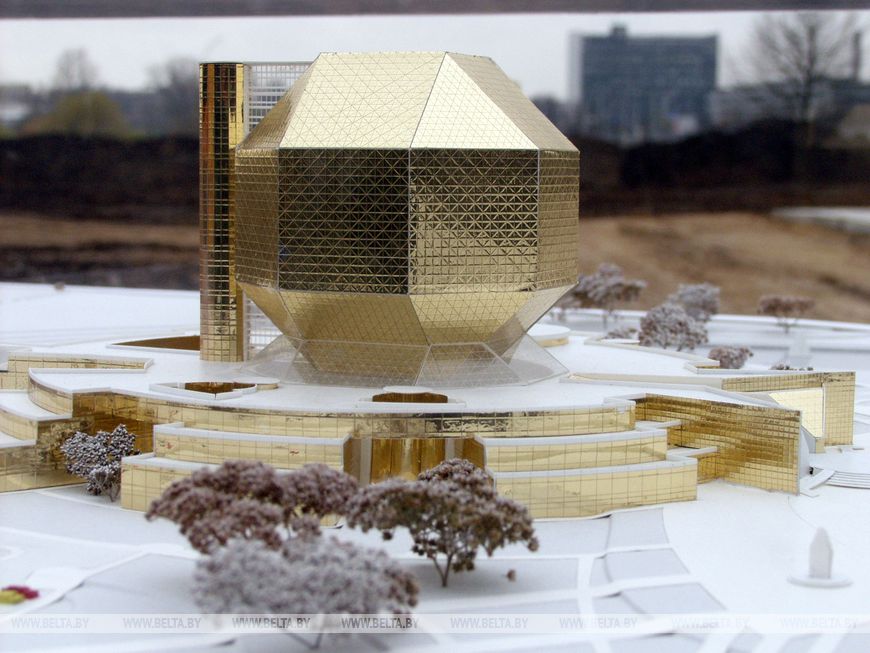
They planned to erect it using the ‘thermos’ principle: build the frame from reinforced concrete and cover it with glass. More than 150,000 tonnes of concrete was used for its foundation. It was a stressful, labor-intensive and expensive project, the head of state admitted. But the president realized that actions, not words are needed to promote the domestic culture. Due to this approach many significant facilities, museums and theaters were built and renovated in Belarus.
Usually, a building is erected based on a ready-made design. Yet, when the construction of the National Library began, there was only an outline. Therefore, designers and builders were working in parallel. During the construction, there was a period when 3,000 builders worked there in three shifts simultaneously in any weather. The whole country was following the construction of the new facility. It became a truly nationwide project. More than 130 organizations from all over the country were involved in the project. Construction workers were assisted by students of Minsk universities. The Belarusian president worked at the site during subbotniks (volunteer labor days) two times. The grandiose project was financed by the government, but Belarusians also pitched in and donated generously to the project. Foreign partners also stepped in to help pull it off. Thus, the National Library of Belarus became a symbol of the national unity and the creative power of Belarusian people. It is not surprising that it immediately became the country's calling card.
Why did the National Library need a new building?
“Figuratively speaking, we took the plunge into the unknown,” Vadim Gigin, Director of the National Library of Belarus, said. “A project from the late 1980s. A project that was called by many ‘futuristic’ (which it essentially was). Some thought that the project was unfeasible, that we would not be able to bring it about on our own. Indeed, it was an experiment, a risk. But nevertheless, we went for it.”
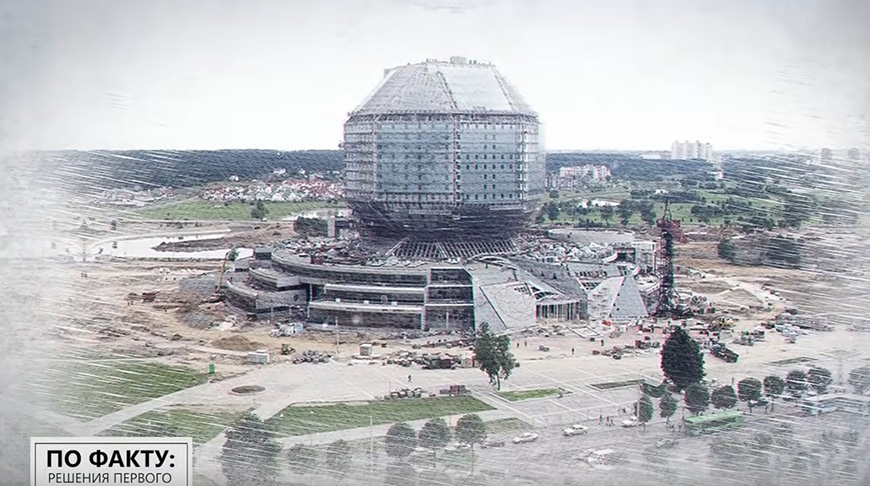
According to Vadim Gigin, Belarus, which saw itself as an independent sovereign state, needed such urban architectural symbols. “The construction of this huge building allowed gathering in one place two dozen buildings of the National Library that were scattered across the city; this allowed visitors to get their books faster and not to stand in long queues any more. It is important that this problem was solved. Yet, this building is also a symbol. Why did the National Library become so recognizable, so loved by both Belarusians and visitors? When we hear the phrase ‘independent and sovereign Belarus’, what images does your mind conjure up? The most popular answer even among schoolchildren is the building of the National Library,” Vadim Gigin said.
The construction of the National Library served to a certain extent as an impetus for the development of many branches of Belarusian industry and art. Even before the start of the work, one of the main instructions of the president was to do everything conscientiously and independently, without involving foreign specialists. The new project provided artists of different generations with a unique opportunity to show their best for the first time in many years, the head of state said.
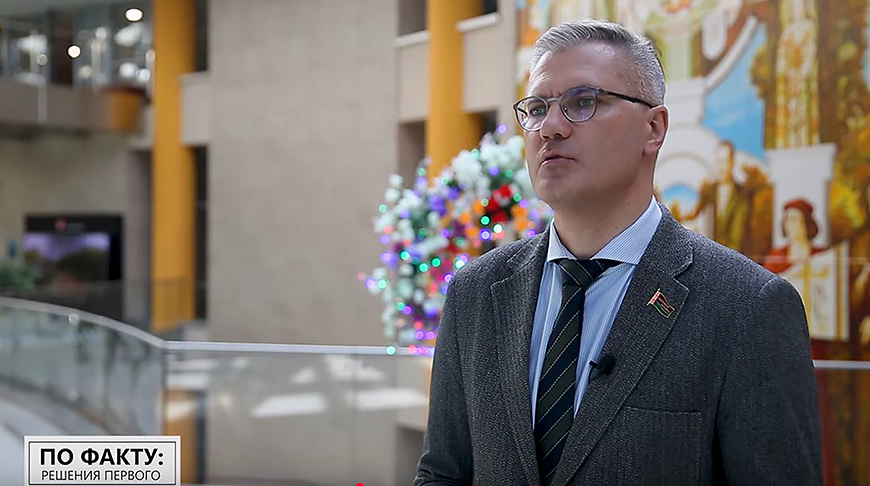
The library became a multifunctional information, social, political and cultural center serving as a venue for international high-level meetings.
“We have to do everything ourselves. We need to learn new competencies. We hadn’t known how to make spider glazing systems and things like that before. We used to import these goods. But Pavlov [former Minsk Mayor Mikhail Pavlov] learned how to do it the following day. And we mastered these technologies, these spider glazing systems, this glass, which we will produce in Gomel. We need it not only for this building, but also for all buildings which we will build in the country. We will use our own glass, our own systems and so on. Everything you see we have made ourselves,” Aleksandr Lukashenko said at the opening ceremony of the National Library.
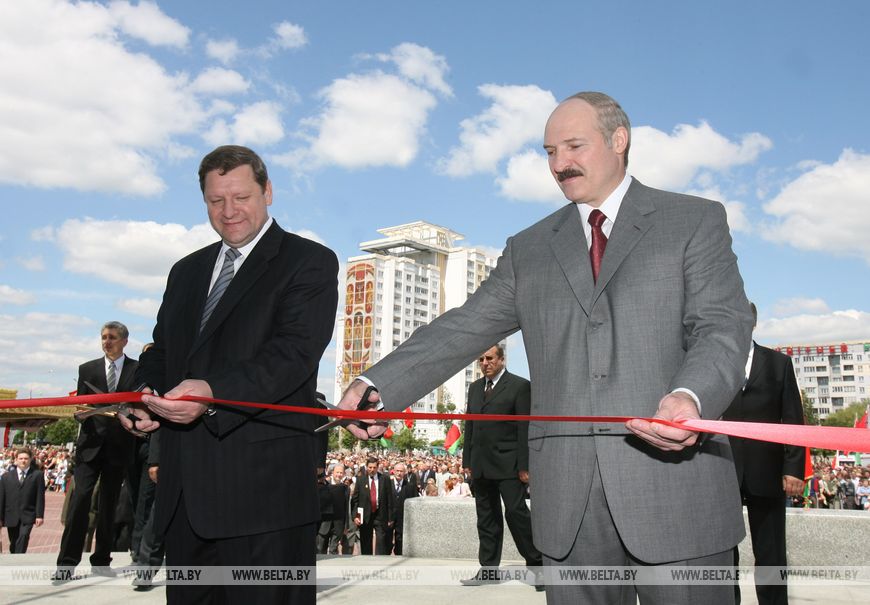
What is inside the National Library?
It took weeks to move books to the new library. Twelve shipping points were set up, and about a dozen trucks drove up to the diamond-shaped building every day. In total, they made 391 trips, transporting eight million documents in 52 days! It would take about 40 years to go through all the documents stored in the National Library of Belarus, if we do it at a speed of one document per two minutes.
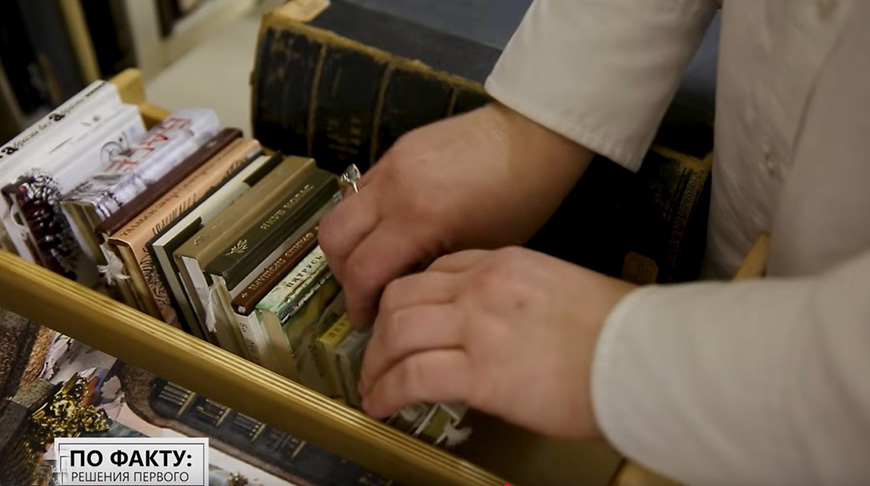
“We are proud of Skaryna's books, which we have in our collection. This is our treasure trove. Skaryna's books are symbols of a high cultural level of the country. Back in the day, during the Renaissance, Belarusians were pioneers in many respects. We have books of other first printers as well. We have a very interesting collection of oriental books. It is quite old and comprises handwritten books from the Middle Ages. Among modern books we have valuable items donated by famous writers and political figures, including the items donated by the Belarusian president,” the director general of the National Library said.
In 2018, Aleksandr Lukashenko honored the National Library with Spiritual Revival Award, one of the main presidential awards, for its work on the facsimile restoration and popularization of the book heritage of Francysk Skaryna. The Belarus President Foundation for the Support of Culture and Art allocates resources to help the library acquire rare handwritten and printed books.
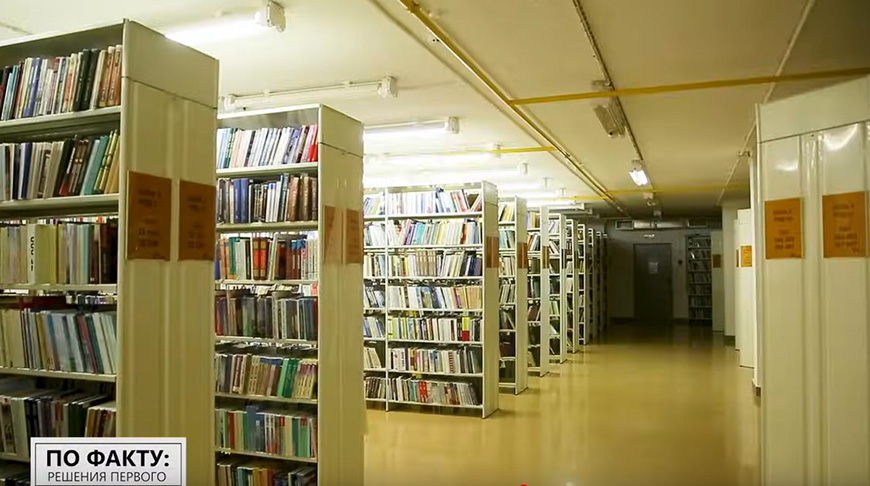
The library has 18 reading rooms with a total of 2,000 seats spanning three floors. Most of the rooms are arranged into spaces featuring an anteroom with counters, shelves and a closed part of the auxiliary fund.
“The high-rise storage houses almost 10 million documents. The storage spans from the 6th to the 16th floor. Each floor is divided into segments storing various documents. All preservation conditions are in place, including an automatic system of temperature and humidity control, and a built-in dust removal system. The book storage division and the specialized funds division house documents dating back as early as 1801. Oldest editions are stored under special storage conditions and with the use of special shelving equipment,” Natalya Andreyeva, Head of the Book Storage Department, said.
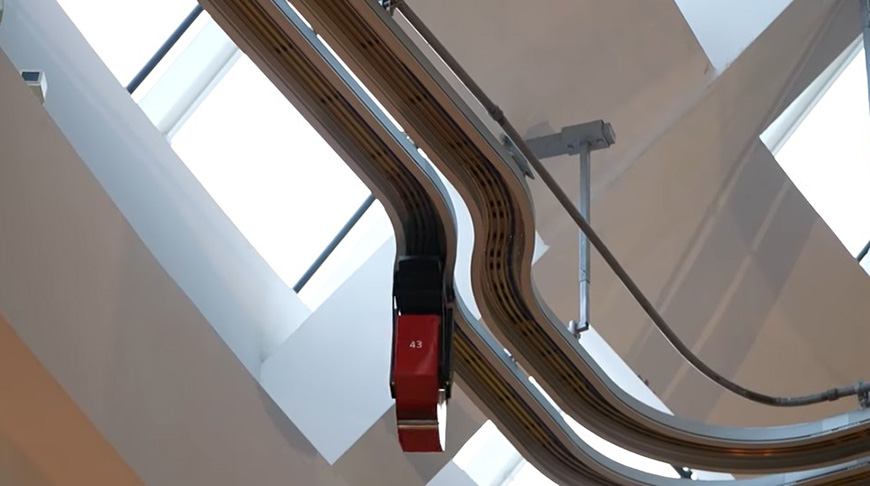
How do books from the storage get into the hands of readers? Quick delivery to reading rooms is provided by an automated monorail transportation system “telelift”.
"At the heart of our 'diamond' lies the distribution hall where we receive users’ orders. Here we print out the order lists using an information system. We can print them out to signal staff to prepare the necessary documents in the relevant section. The 'telelift' operates on a monorail system approximately 770 meters long, along which about 30 containers deliver documents to the reading halls," Natalya Andreyeva explained.
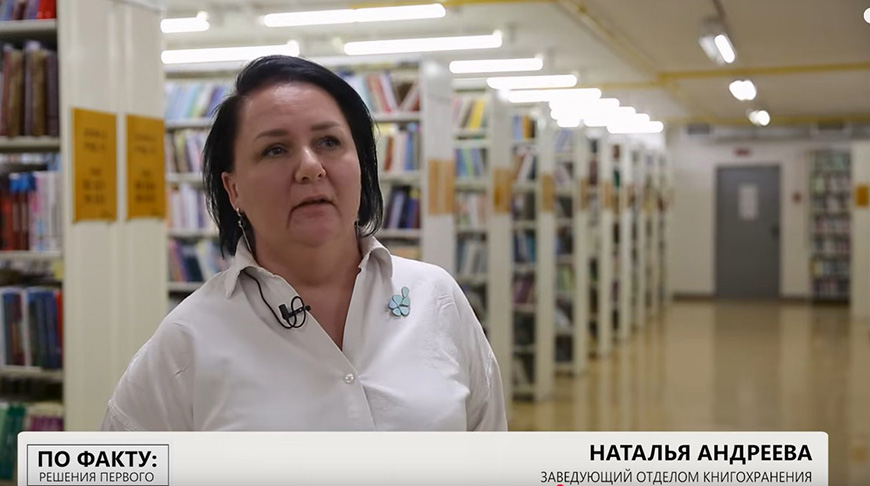
What makes the National Library of Belarus unique?
A bird’s eye view of the National Library reveals its full architectural beauty. The building is shaped as a rhombicuboctahedron, a complex polyhedron consisting of 18 squares and 8 triangles, set atop a stylobate. Unlike most libraries, where the main collection is stored underground, here it is housed on the top floors, within the 'diamond' itself. The design symbolizes the value of knowledge and the infinite nature of exploration, as envisioned by its creators.
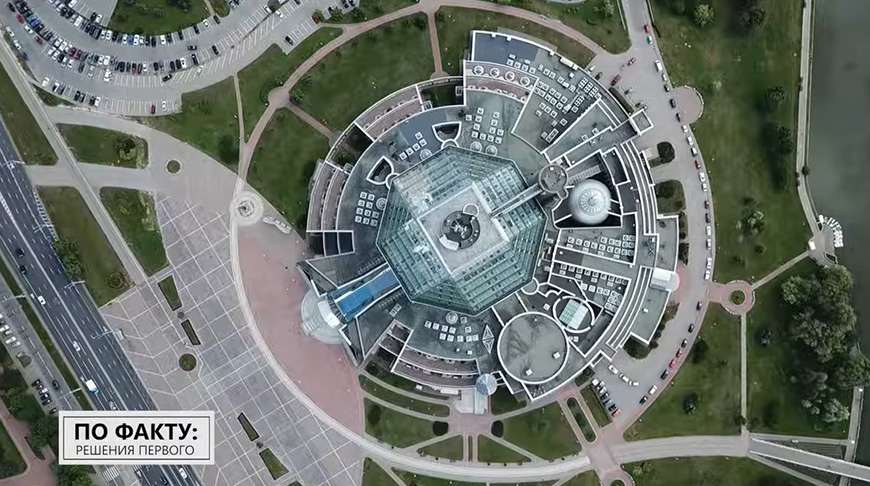
The multicolored media facade, functioning as an illuminated screen, lights up daily at sunset. On the 23rd floor of the 'diamond', there is an observation deck offering a stunning panoramic view of Minsk. Interestingly, The original project planned for golden-silver glass, but due to production timelines of about two years, the decision was made to simplify the design. Nevertheless, the glass is still unusual and durable: it is impossible to break it even with a sledgehammer.
"Once a year, from April till October, the building undergoes a thorough cleaning. The facade covers approximately 47,000 square meters. There are also glass panels inside the building that require cleaning. As for the high-rise book storage facility, it is cleaned by professional industrial climbers who hold official certification and have undergone specialized training for working at heights," Head of the Maintenance Department Viktoria Kovalevskaya said.

In the square in front of the National Library's main entrance, there is a monument to Belarusian enlightener Francysk Skaryna. The entrance is symbolically designed as an open book, featuring images related to the development of global and Slavic literacy, along with the quote from Skaryna's Bible "so that the man of God may be complete, equipped for every good work” displayed in 19 languages.
After the National Library was inaugurated, Aleksandr Lukashenko admitted that its construction was his response to modernity. According to the president, through the creation of the library he wanted to pay tribute to the printed word.
“This, if you will, is my response to modern times. I suppose I am conservative in this regard: I venerate the book. You must agree that books are losing their significance nowadays. Our children are no longer interested in books the way we were. Many alternatives for books have emerged. But I wanted to immortalize the book. This is my tribute to it. I am saying this for the first time, but I see the library as a homage to the book. Under no circumstances should we lose books. Books are everything," the Belarusian leader stressed.
The National Library’s new building is estimated to have a lifespan of 500 years. Certainly, its collections will become outdated much sooner, but just imagine how many generations will still have a chance to appreciate the creative power of the Belarusian people.





